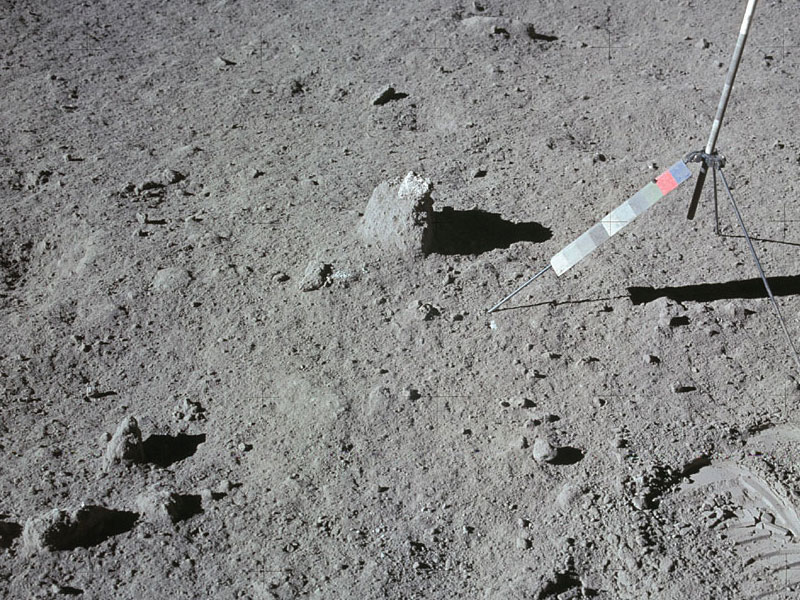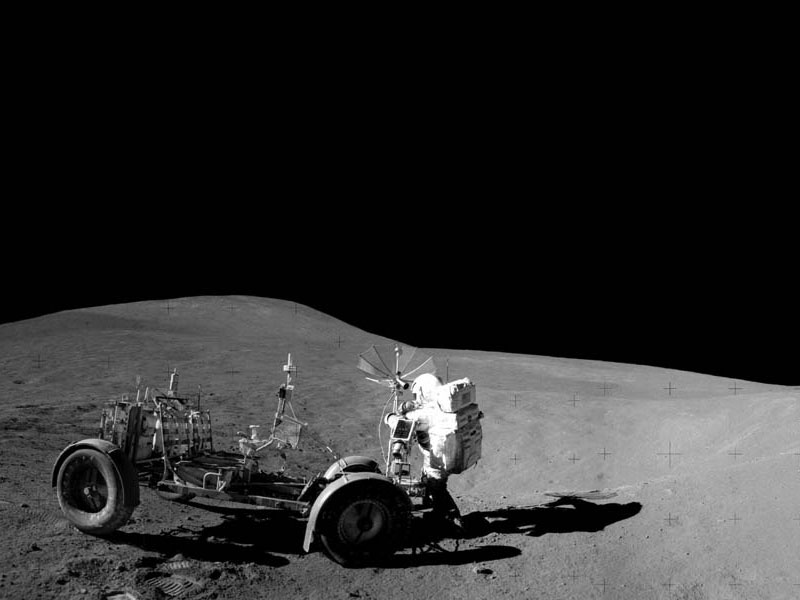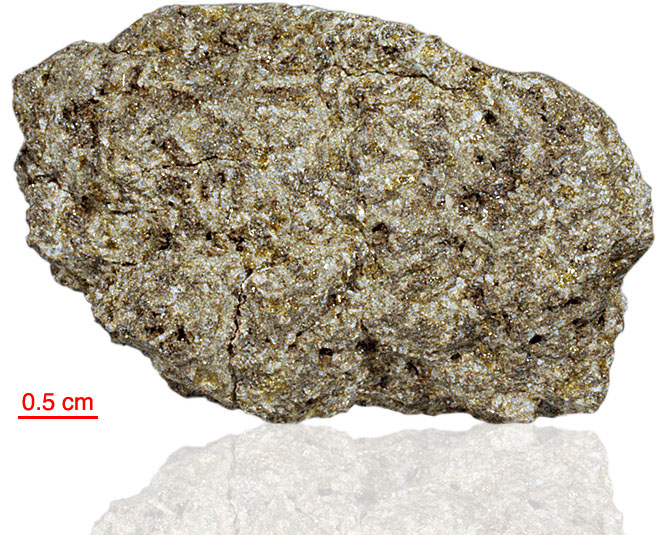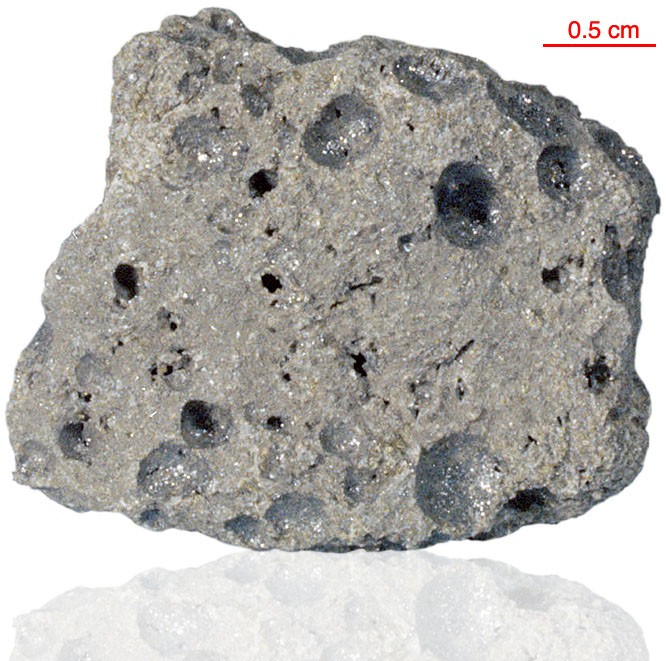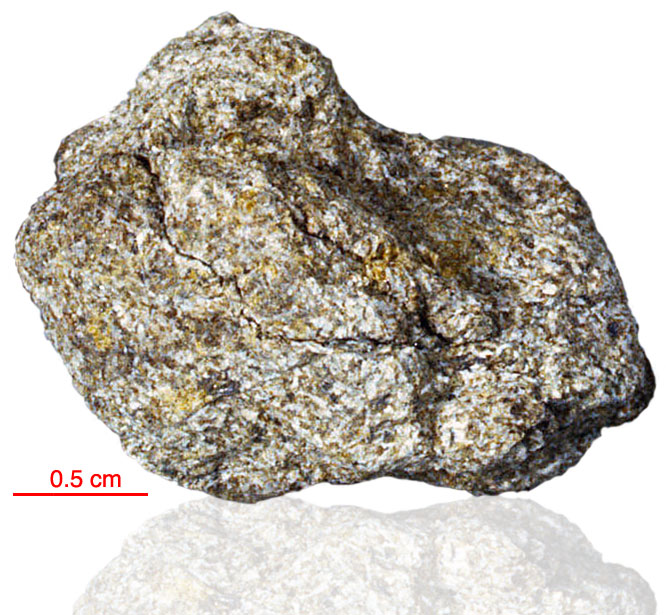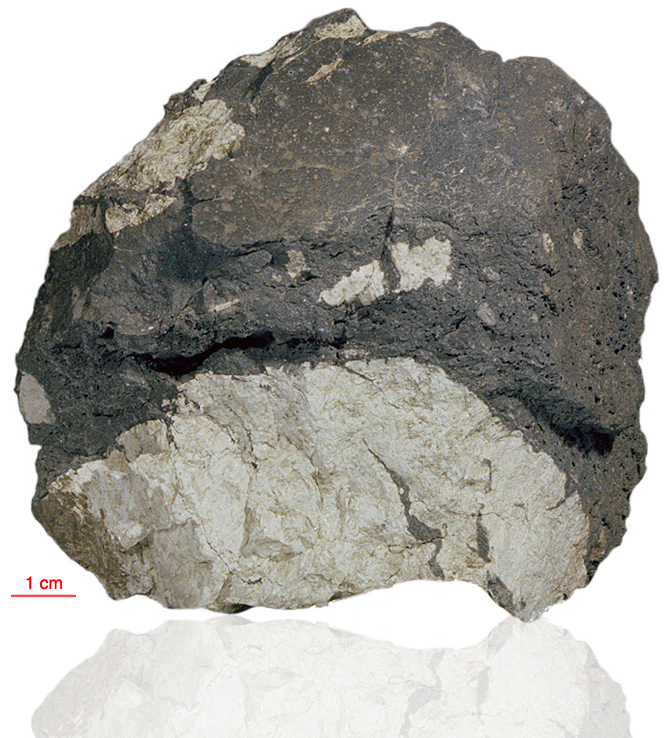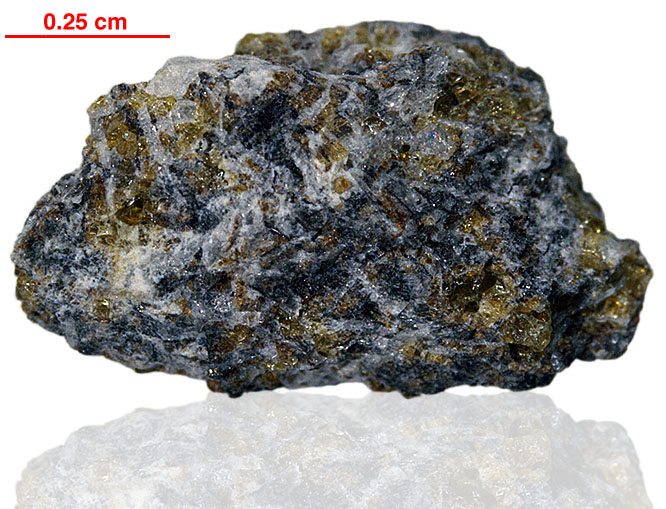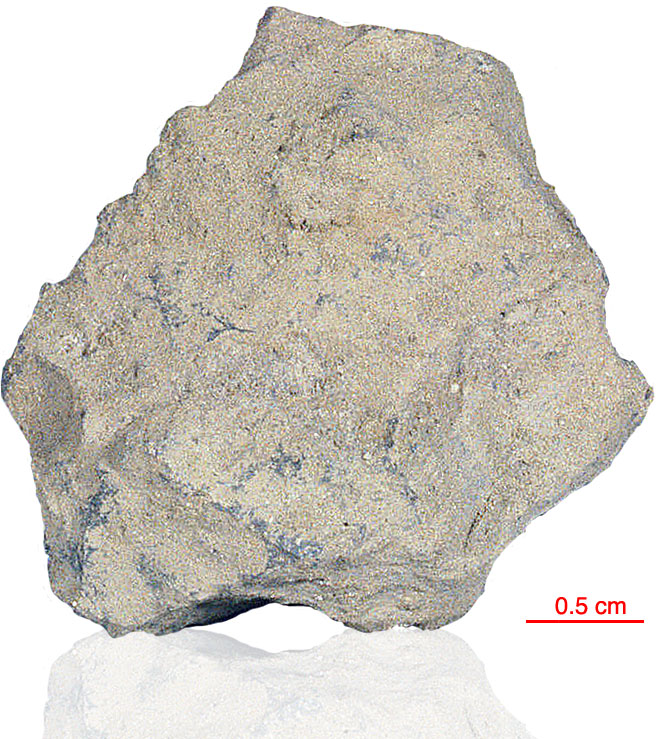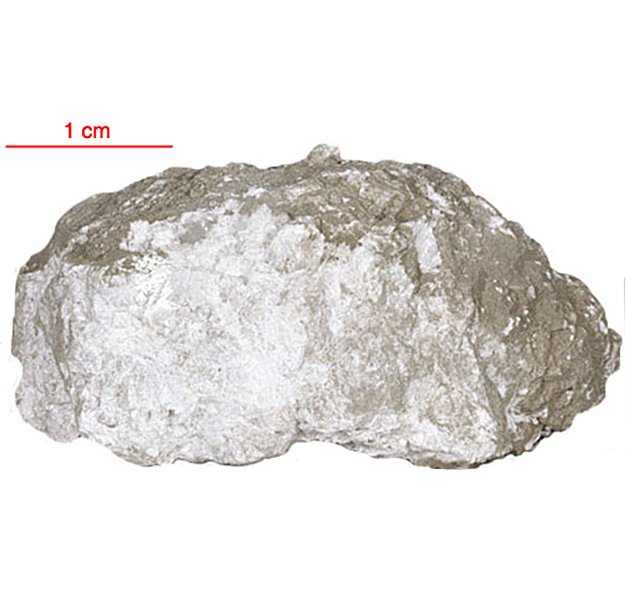
Fact sheet
15415 is a coarse-grained plagioclase-rich rock, and is one of the best-known Moon rocks. It was collected from the rim of Spur Crater and given the name ‘Genesis Rock’ by the astronauts of Apollo 15. They had been looking for evidence of the Moon’s early-formed crust and they declared they had found what they were looking for when they came across this. It is one of the oldest rocks they collected.
In addition to the 98% of plagioclase feldspar present, the rock contains minor pyroxene, ilmenite and silica. The grain size of the plagioclase reaches 1.8cm. The rock has been close to the Moon’s surface for much of its life and the grains show evidence of shock cracking and fracturing.
The sample weighed 269.4 grams before analysis. The metamorphic overprint on this sample precluded an accurate age date but a good estimate is ~4 billion years (Ar/Ar).
Further details of this and other Apollo samples are here: http://curator.jsc.nasa.gov/lunar/
The Apollo 15 landing site was in the Apennine Highlands, and close to Hadley Rille — a long, narrow winding valley. Approximately 76 kg of lunar material, including soil, rock, core-tube and deep-core samples, were returned to Earth.
This mission was the first flight of the Lunar Roving Vehicle which allowed the astronauts to venture further from the Lunar Module than in previous missions. During three periods of extravehicular activity, or EVA, on July 31st, and August 1st and 2nd, Scott and Irwin completed a record 18 hours, 37 minutes of exploration, travelling 17.5 miles, in the first car that humans had ever driven on the Moon.
Apollo 15 was launched on 26 July 1971.
